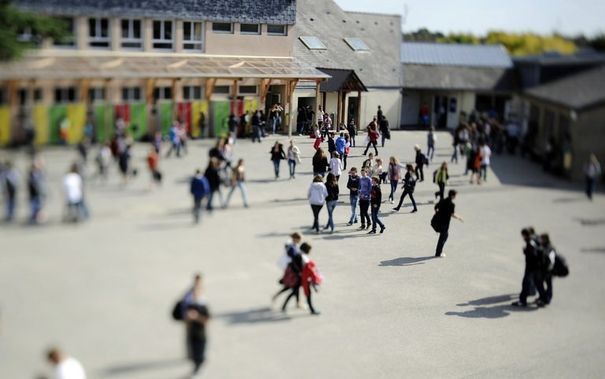A wooden facade blackened by smoke and charred sheet metal debris strewn on the road. The Angela-Davis school in Bezons, in Val-d’Oise, was the target of rioters on the night of June 29 to 30, after the death of Nahel killed by a policeman in Nanterre two days earlier. Many other school buildings were affected across the country and some were forced to temporarily close their doors to protect themselves from possible attacks. Some analysts saw it as a reaction of anger against a system that struggles to grant the same chances of success to all children regardless of their social origin. “I don’t think that young people specifically attack schools as such. It’s more institutions in general that they seem to reject”, advances the director of research emeritus at the CNRS Olivier Galland, pointing to the side “a little nihilist” of this revolt.
This does not prevent specialists from questioning the role of the school institution today. “School is far from being solely responsible for this situation of fracture which crosses our country”, estimates Marie Duru-Bellat, professor emeritus of sociology at Sciences Po and researcher at the Center for Research on Inequalities. “Even if its function which aims, theoretically, to provide a culture and a common education turns out to be very imperfect” she adds.
“‘At home it happens like that but not at home’, some students often retort, as if there was a world between us”, says Sophie, 49, teacher in a college classified in priority education network of the Yvelines. Like her, many teachers report this distancing. “The fact that these personnel, often from the middle class, are sometimes sent against their will and without adequate training or experience in difficult neighborhoods does not help to bridge this distance”, analyzes Marie Duru-Bellat, who deplores the lack of resources granted to these establishments, the high turnover of teaching staff, course content that is often far removed from the daily lives of young people and their concerns. The lack of social and academic diversity of the public received also often contributes to increasing a certain feeling of relegation.
From there to say that everything is played in advance… It is far from being the case. “I refuse this discourse which consists in saying that these neighborhoods are abandoned and that the students are necessarily doomed to failure. Putting forward a form of systemic discrimination is as false as it is dangerous! School is not not perfect but it continues to function thanks to the involvement of its staff”, insists history-geography professor Iannis Roder who teaches in Seine-Saint-Denis. While also being careful not to darken the picture excessively, Olivier Galland recognizes however that “the school has difficulty in fulfilling its mission which is to integrate young people from housing estates both in terms of acquisition and skills. A form of orientation suffered is thus often experienced by students from sensitive neighborhoods as a moment of rejection and humiliation.
Another of the school’s mistakes, according to Olivier Galland, would be to continue to apply a very uniform model throughout the territory. “I have the feeling that there should be more flexibility in the way of dispensing knowledge so as to better adapt to the heterogeneous audiences that the different establishments welcome”, insists the sociologist who advocates greater autonomy for colleges and schools. high schools. This implies giving more power to the heads of establishments in order to allow them, in particular, to recruit teachers themselves, around a common educational project. A desire regularly affirmed by President Emmanuel Macron but which is far from unanimous in the teaching community.
